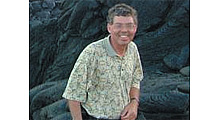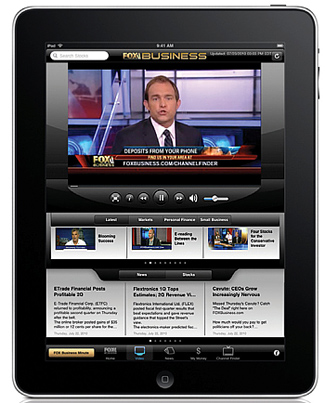Setting Standards for Next-Gen Digital Broadcasting

A bit less than a year ago I asked "Is LTE in Broadcast's Future?" (TV Technology, March 2, 2011). Since that article was published, I've seen increased interest in a new broadcast standard. This month I'll outline some suggested requirements for it.
WHAT'S WRONG WITH ATSC VSB?
A common reaction to last year's article on LTE was, "Why do we need to change the DTV standard when we just completed the DTV transition?"
ATSC Standard A/53 was published in 1995 and adopted by the FCC in 1996, more than 15 years ago. That's a long time. Fifteen years ago we didn't have smartphones. Microsoft's Internet Explorer had just been released and Internet connection was mostly through telephone modems at 56 kbps or less. Technology has changed.
ATSC A/53 served broadcasters well and the standard has been updated, including addition of IP-based transmission to mobile/portable devices in A/153. The problem is that even with A/153, the current ATSC standard falls behind in spectrum efficiency and the ability to use single frequency networks to provide reliable service to handheld devices.
Although "cord cutting" has increased interest in fixed reception of over-the-air TV, the vast majority of in-home viewers watch TV via cable TV or satellite, not over-the-air. A better transmission system is required to serve portable wireless devices like smartphones and tablets without ignoring those viewers who want HD over-the-air on their big sets.
REQUIREMENTS
Let's look at the features the new system should support. Compatibility with existing receivers would be nice, but impossible due to the need to move to a new modulation or new coding method. Fortunately newer TV sets have Ethernet connections, Wi-Fi capability and USB ports that should make it easier to add an external receiver.

The next-gen system must also be able to provide the same or better "real-world" coverage as A/53. With the growing demand for spectrum for wireless broadband, the next-gen system ideally would allow broadcasters to maintain their 19.39 Mbps data rate with less than 6 MHz spectrum.
A cellular infrastructure, while spectrum-efficient, is not practical due to the large number of sites required to cover broadcasters' current coverage areas. However, the next-gen system must allow for on-channel repeaters to improve signals in urban canyons, terrain-obstructed areas and near the edge of the coverage contour without the interference problems present with the existing 8VSB technology. It should also allow closer spacing of stations without increasing interference.
If you have used an 802.11n wireless router you know that multiple-input, multiple-output (MIMO) technology improves coverage and data rate. This technology has been tested for digital broadcasting and should be part of the next-gen standard.
ATSC standards A/53 and A/153 take advantage of forward error correction and coding to allow reception at signal-to-noise ratios that would otherwise be unusable. A/153 includes powerful turbo-coding algorithms that can provide up to a 10 dB gain over A/53 8-VSB for mobile/portable devices with no increase in transmitter power.
Unfortunately, turbo-coding isn't available for conventional ATSC reception. The next-gen standard should take advantage of the latest coding technology for all reception modes and be adaptable enough to allow the use of new technology when it becomes available.
You may have noticed I've used the term "next generation digital broadcasting" and not "next generation DTV." The reason is that today, when virtually all new TV sets and portable devices connect to the Internet, it is best to think in terms of "data" rather than video and audio.
By focusing on data, rather than limiting the standard to specific video and audio formats, broadcasters will be able to take advantage of the latest codecs and technology developed for use on the Internet. For example, many, if not most, new TV sets already support MPEG4 decoding. At CES this year it was hard to find a fixed TV set that didn't have some form of Internet connectivity.
Since most of the non-fixed devices with TV capability are also likely to have wireless broadband, some degree of compatibility could help speed adoption of a new broadcast standard.
Sharing unused broadcast data bandwidth on a real-time basis with wireless carriers could provide additional income for broadcasters and allow wireless operators to move popular "broadcast" Internet content off their spectrum.
At a meeting late last year in Shanghai, broadcasters from around the world met to discuss coordination of future TV broadcast standards, ("ASTC Endorses Global Broadcast TV Standards Effort," Nov. 11, 2011). Several options are being considered. The ATSC's "Final Report on ATSC 3.0 Next Generation Broadcast Television" has an excellent summary of options and their trade-offs.
WHAT'S NEXT?
Before broadcasters can move to a next-generation digital broadcasting system they will have to make some difficult decisions. What is the best way to transition existing over-the-air viewers to the new system without losing them to cable or wireless broadband services?
Assuming the FCC allows it, will they be willing to combine their 6 MHz channels into larger channels (20 MHz or more) to allow greater spectrum efficiency and flexibility? If channels are combined, how will the combined infrastructure be managed?
The DTV transmission system in the United Kingdom and smaller scale cooperative efforts such as Sutro Tower in San Francisco and the MTVA in New York City may provide some guidance. To what extent, if any, should mobile wireless operators participate in the design, use and/or operation of the next generation digital broadcasting system?
Since TV Technology published my article last March, I've seen more agreement that, for TV broadcasting to survive into the next decade, a new transmission standard is needed soon—within the next three to five years. Work on this has started with the new ATSC TG3 ATSC 3.0 Technology Group. NAB is also actively involved. Broadcaster participation is needed now!
I welcome your comments and suggestions! Email me at dlung@transmitter.com.
Get the TV Tech Newsletter
The professional video industry's #1 source for news, trends and product and tech information. Sign up below.

Doug Lung is one of America's foremost authorities on broadcast RF technology. As vice president of Broadcast Technology for NBCUniversal Local, H. Douglas Lung leads NBC and Telemundo-owned stations’ RF and transmission affairs, including microwave, radars, satellite uplinks, and FCC technical filings. Beginning his career in 1976 at KSCI in Los Angeles, Lung has nearly 50 years of experience in broadcast television engineering. Beginning in 1985, he led the engineering department for what was to become the Telemundo network and station group, assisting in the design, construction and installation of the company’s broadcast and cable facilities. Other projects include work on the launch of Hawaii’s first UHF TV station, the rollout and testing of the ATSC mobile-handheld standard, and software development related to the incentive auction TV spectrum repack. A longtime columnist for TV Technology, Doug is also a regular contributor to IEEE Broadcast Technology. He is the recipient of the 2023 NAB Television Engineering Award. He also received a Tech Leadership Award from TV Tech publisher Future plc in 2021 and is a member of the IEEE Broadcast Technology Society and the Society of Broadcast Engineers.
